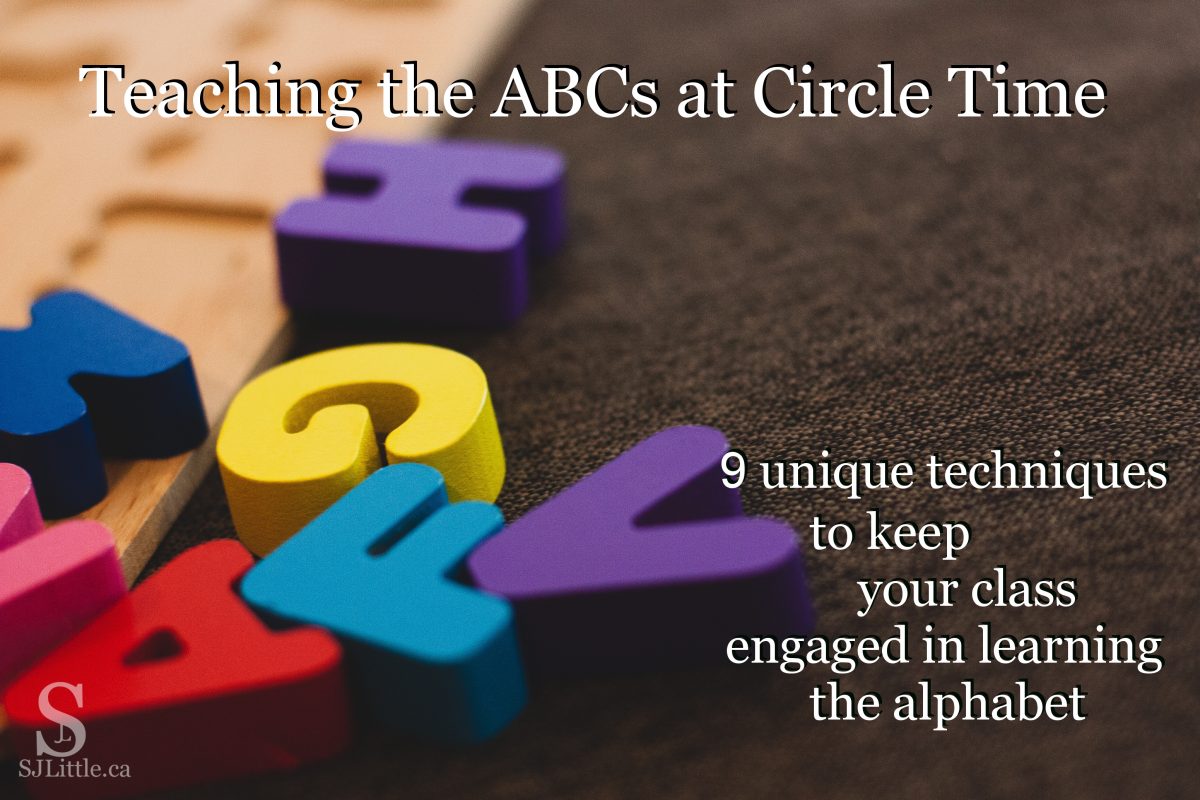
With spring comes wiggly children. Keeping the attention of a class full of preschoolers this time of year is challenging. Sometimes changing up your methods for teaching the ABCs can regain their enthusiasm for learning letters.
Below I have collected 9 unique techniques for teaching the ABCs at circle time.
For more tips, check out my article: 8 Tips for Keeping Preschoolers Engaged During Circle Time
-
Letter posters
Many teachers use a set of posters with one poster per letter. Typically these include the letter and pictures of one or more items starting with that letter. Each week the poster for the letter of that week will be displayed. Then during circle time the teacher points to the poster and asks the children if anyone knows what letter it is and what the objects are.
-
Singing
Many songs exist for helping children learn about letters. One that I’ve used is:
Letter “A” says a (tune: Farmer in the Dell)
Letter “A” says a,
Letter “A” says a,
Every letter makes a sound,
Letter “A” says a.
If you use the same song every week the children will be able to focus on the letter and sound rather than the tune of the song, however, changing it up may keep their attention better.
-
Air tracing
For children who learn best through large body movements, this technique is wonderful. As you tell the class the letter, use your whole arm to trace the letter in the air in front of you. Encourage the children to copy you. You could also have them trace it in the ground with their finger (or foot). Alternatively, have them shape their whole body into the letter. For example, for letter t they can stand straight with their arms perpendicular to their sides. Get creative and have some fun.
-
Letter box
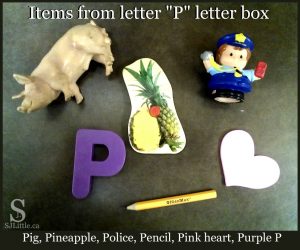
Prior to class fill a small box with four or five items beginning with the letter of the week. Look through your toy bins, puzzles and playdough cookie cutters. I also like to include the letter itself whether on a puzzle piece, or block, or magnet.
At circle time, I show the children the box and have them chant with me while tapping the beat:
Open up the box
Open up the box
Open, open, open, open
Open up the box.
I then bring out one item at a time, asking if they know what each is and discussing how each relates to the letter. This adds excitement and mystery to learning about the letter.
-
Mystery item
A little different from the letter box, this activity works best when at least a handful of children in the class already have a good sense of the alphabet.
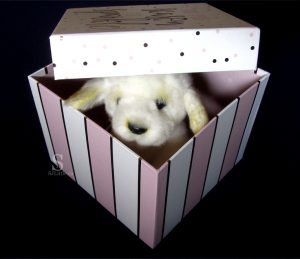 Prior to class, find an item starting with the letter of the week. Place that item in a box as the mystery item. Show the children the box telling them that something is hiding inside it. Inform them that the item starts with the letter of the week. Review with them what sound the letter makes.
Prior to class, find an item starting with the letter of the week. Place that item in a box as the mystery item. Show the children the box telling them that something is hiding inside it. Inform them that the item starts with the letter of the week. Review with them what sound the letter makes.
Ask the children to guess what item may be inside the box. Be gentle and encouraging with those who guess items starting with the wrong sound, otherwise, they may not be willing to guess next time. For any guesses that are the right sound, you could answer, “maybe…” Then ask for a few more guesses before revealing the item.
-
Popsicle stick letters
This is another good one for hands-on learners, however, this technique only works with certain letters.
When the letter of the week is one with no curves, you could try this technique. Prior to class, determine how many popsicle sticks you will need to make the letter. Also, ensure you have enough for every child to make their own letter.
At circle time, use the sticks to show the children how to make the letter.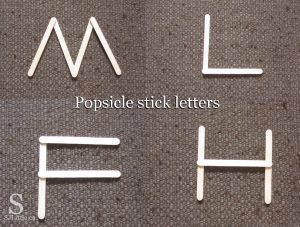 Then hand out enough popsicle sticks to every child. (You could make this a game by handing too many or too few sticks to some of the children and having them count to tell you if they have the wrong number.)
Then hand out enough popsicle sticks to every child. (You could make this a game by handing too many or too few sticks to some of the children and having them count to tell you if they have the wrong number.)
Once every child has the correct number of sticks, show them again how to form the letter by placing the popsicle sticks on the ground in the correct shape.
Be encouraging as this is very tricky for children the first few times they do it. You may have to show several of them one on one. You could also encourage more advanced children to help those who are struggling. Once you’ve done this a few times the children will catch on better.
-
Draw on a whiteboard/chalkboard
Another hands-on way to learn letters and develop writing skills is to have each child write the letter at circle time. This can be done one at a time or all at once depending on the materials available to you.
One at a time:
On the bulletin board, securely attach a larger writing surface whether a chalkboard, whiteboard, or large laminated poster to be used as a whiteboard.
One at a time, invite each child to come up and try writing the letter of the week on the board. Be sure to write it first so they have something to copy. Be encouraging as not only are they being courageous to try writing the letter, they are also practicing being comfortable in front of a crowd which does not come easily for some children.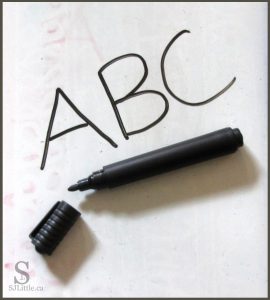
All at once:
Pass out individual whiteboards or chalkboards to each child. On your own whiteboard or chalkboard demonstrate writing the letter, then encourage each child to try it on their boards. Some children may need one on one help with this.
-
While taking attendance
Some teachers take attendance during circle time by calling the children one at a time. Rather than just having the children say “here” why not use this time to help them learn their letter?
Before taking attendance, discuss the letter of the week with the children and mention some things that start with that letter.
Next, instruct the children that when you call their name, you want them to say something that starts with the letter of the week. Ideally, have some visual reminder of words starting with that letter. Most likely several of the children will say the same thing. That’s okay.
-
Alphabet Videos
Something I have not tried but believe could work well is using videos. Youtube has a wide range of short films, often including songs, about learning letters. These could be integrated into the circle time routine.
What other strategies have you found effective for teaching the ABCs at circle time?
Looking to make a curriculum to fit your children’s needs? Here’s some advice you don’t want to miss: Create Your Own Preschool Curriculum for Free
